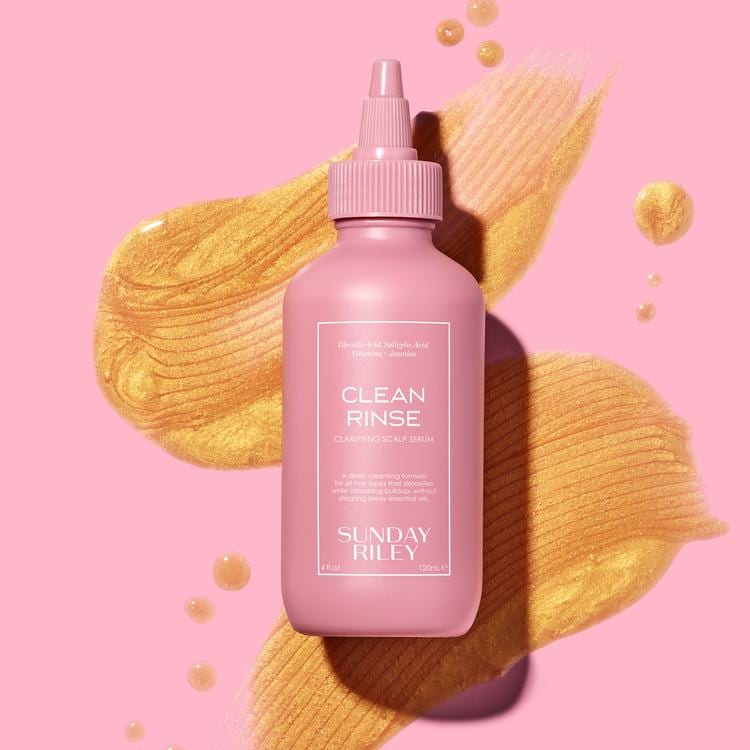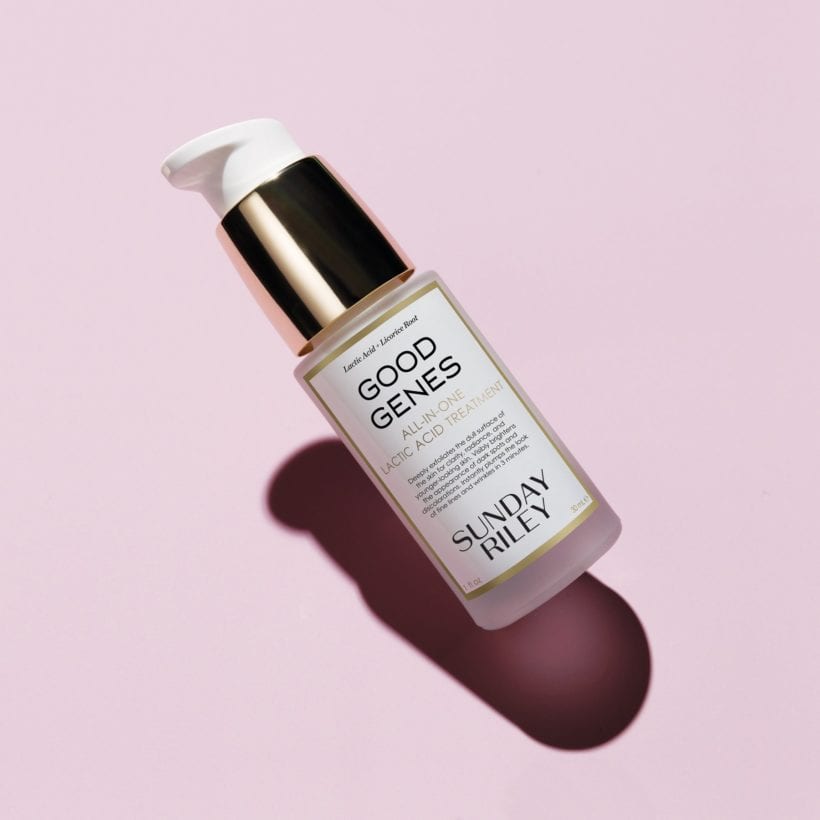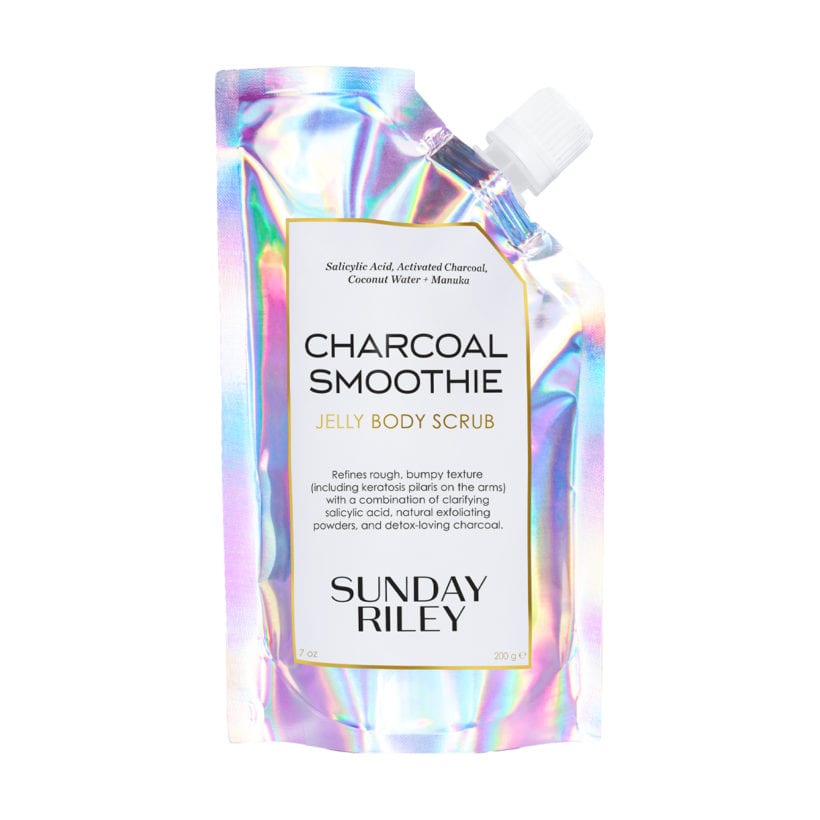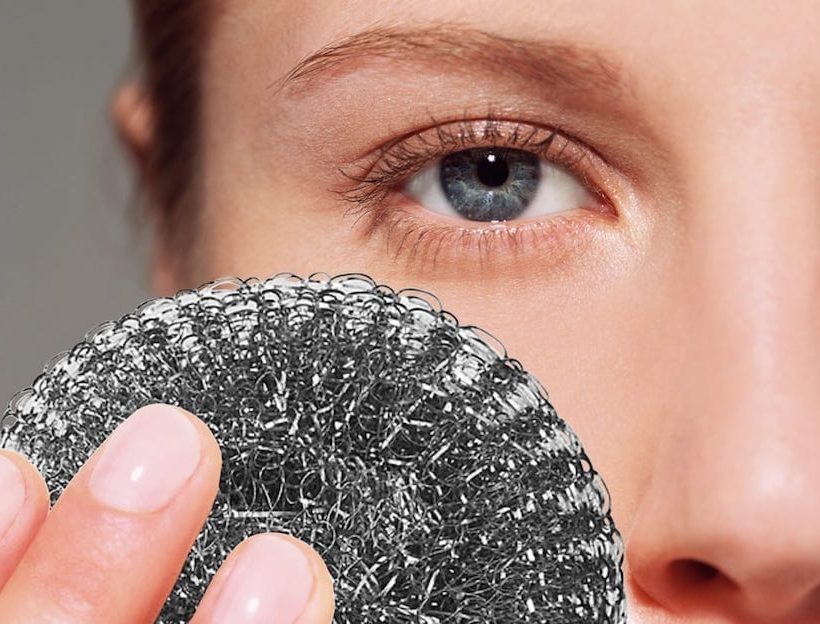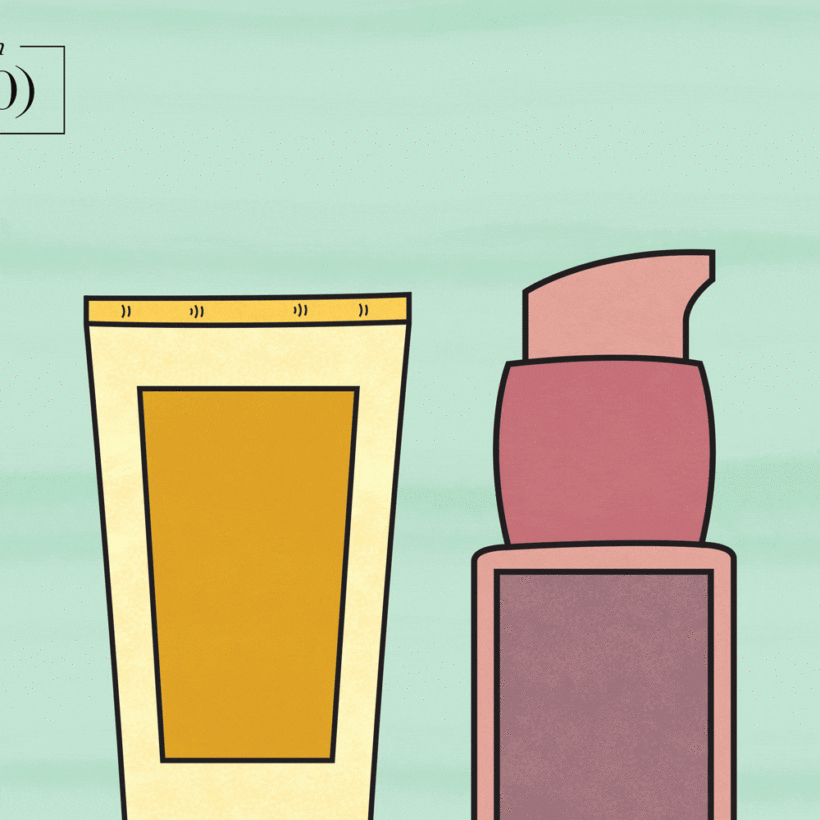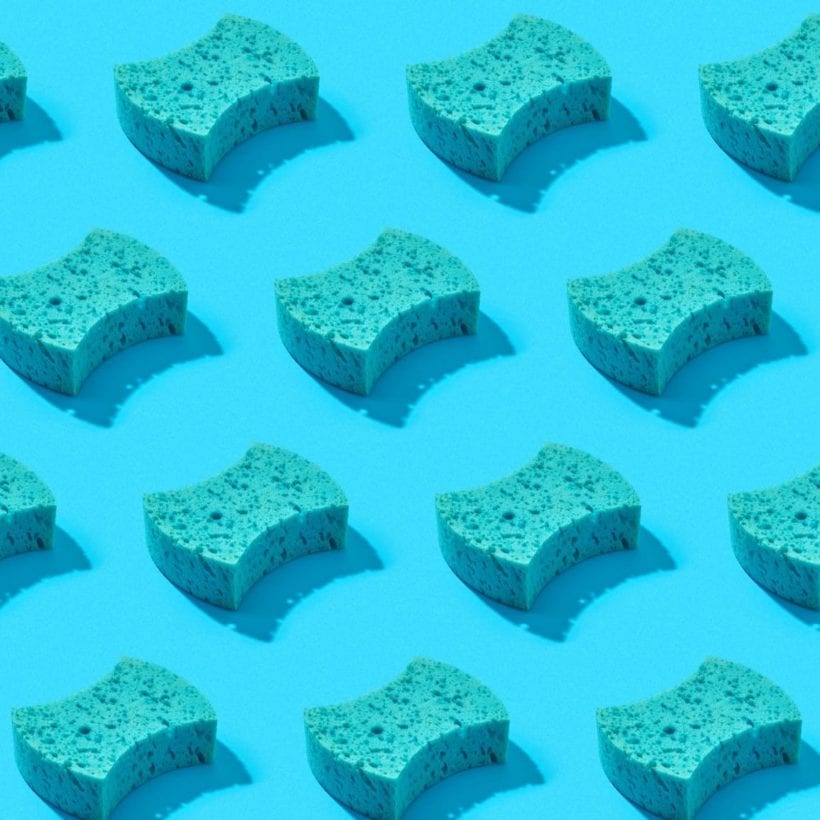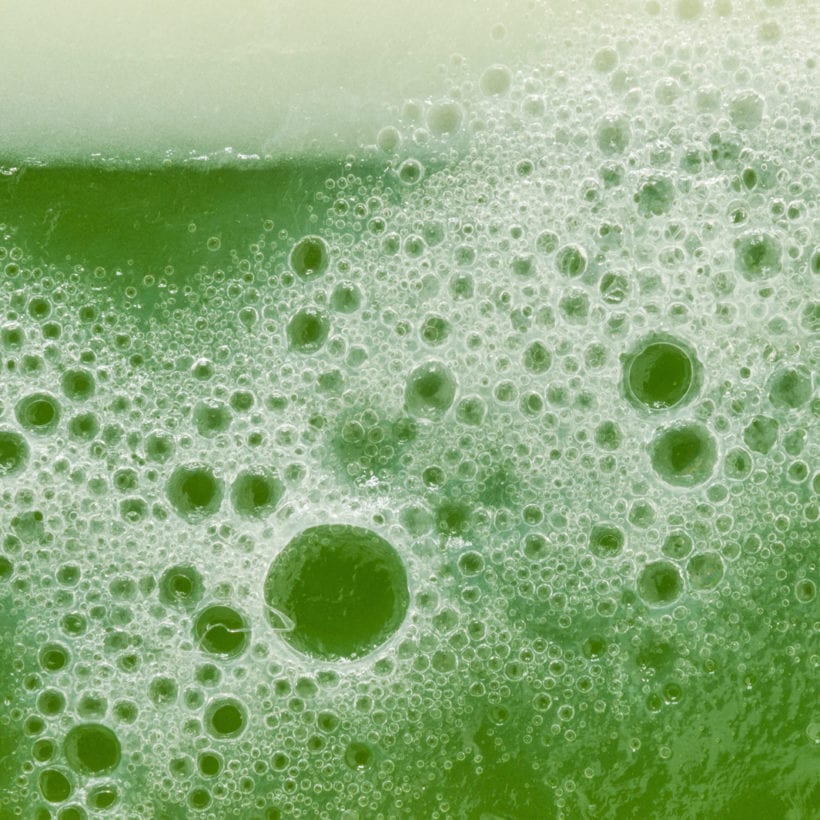Raise your hand if you want glowy, clear skin. Raise your other hand if you have no idea how to get there. Exfoliation is pretty much our favorite skincare trick in the book, but we know that the information can be daunting. There are physical and chemical exfoliators, acids and enzymes, AHAs and BHAs… by the time you’re done looking up what everything means, you’ve given up on figuring out which one is the right type for you. We’ve boiled exfoliation down to the simplest skincare speak possible so you can see what the hype is all about.
Physical Exfoliators
What they are: Physical (manual) exfoliators are scrubs made from small particles (for example, natural seeds or crushed sugar). Basically, if you see little bits in your exfoliator, it’s a physical one. This process uses friction from your fingertips to loosen dead skin from the outermost layer.

How to use them: You’ll first need to wash your face with your regular cleanser to get off any makeup and grime. Physical exfoliators will often look like cleansers as well, but you’ll spend a little more time (two or three minutes) manually massaging the product into your skin using circular motions as the particles are usually water-soluble. A cleansing brush, loofah or even a soft washcloth can also be considered a physical exfoliator.
How often you can use them: If your skin can handle it, two or three times a week, but start with once a week if you’re new to exfoliators or if it’s been a while.
Why we love them: You get that instant satisfaction of clean-feeling skin.
Who they work best for: People with oily, combination or mature skin (make sure the particles are very fine or not too harsh, like jojoba beads).
Pro tip: It’s easy to over-exfoliate and roughly massage a physical exfoliator into your skin. A common misconception is that the harder your scrub, the deeper the cleanse, but that’ll possibly create micro-tears on the surface of your skin. You don’t have to apply that much pressure.
Acid Exfoliators
What they are: Putting acids on your face isn’t as scary as it sounds. Acids are a type of chemical exfoliators commonly known as AHAs (alpha-hydroxy acids) and BHAs (beta hydroxy acids). “These acids gently dissolve and lift the dead skin cells off the outer layer of skin, revealing brighter and more vibrant skin underneath,” says Christie Kidd, PA-C skin expert. AHAs are water-soluble acids and the most common types you’ll find are glycolic and lactic acids. BHAs are oil-soluble and the most common type you’ll hear about is salicylic acid. While AHAs and BHAs both do the job of exfoliation, AHAs are great for people who are also concerned with hyperpigmentation and sun damage while BHAs work best for acneic and oily skin (it penetrates deeper into clogged pores).

How to use them: Acid exfoliators can be used as cleansers, serums, toners or even disposable (and convenient) wipes. All acids are applied to dry skin. “They do penetrate deeper, they are considered to be stronger,” says Kidd. You want to be mindful of the different percentages of acid there are in your product, as this determines its strength. If you’re new to acids or exfoliation in general, it’s best to start with a low percentage and work your way up if you need to. “Both physical and chemical exfoliators can be in your skincare line up, however never to be done on the same day. Space them at least one week apart to avoid any unwanted irritation,” says Kidd.
How often you can use them: It depends on your skin tolerance and skin type, but once a week is often recommended depending on the type of ingredient (and percentage) you’re working with.
Why we love them: Since there aren’t any physical particles, you can never over scrub. And chemical exfoliators do way more than just exfoliate — they can brighten and firm skin, encourage collagen growth, as well as fight blemishes. “Chemicals are able to penetrate deeper and generate new cellular growth, therefore giving greater longer-lasting results,” says Kidd. We also love that you can adjust your chemical exfoliator to your skin type by playing around with the percentages. Physical or enzyme exfoliators (more about those below!) don’t have this capability.
Who they work best for: People with normal or sensitive skin. Like a physical exfoliator, you’ll see immediate benefits from a chemical exfoliator like brighter skin, but for other benefits (for example, collagen regrowth), you’ll have to wait about 4-6 weeks for your skin to fully get used to a new product.
Pro tip: Over-the-counter drugstore acids are safe to use at home, but avoid buying professional-grade acid peels online. Products with a high percentage of acid should really be used at the hands of a medical professional, like your dermatologist. Otherwise, you’d be at risk for chemical burns or scarring.
Enzyme Exfoliators
What they are: “Enzyme exfoliators are similar to acids in that they both digest and dissolve dead skin cells,” says Kidd. Acids, however, also dissolve living skin cells to increase the rate of cell turnover. “Enzymes are fruit-derived — most often from papaya, papaya and pomegranate — and tend to work more superficially,” says Kidd. Activated by water, they break down the natural proteins found in your skin, leaving behind a soft, smooth texture.

How to use them: “They’re activated by water, so they are generally applied to damp skin and can remain on the skin for up to 15 minutes depending on the product,” says Kidd.
How often you can use them: You can use them every two or three days — less if you’re just starting out.
Why we love them: If you’re new to stepping up your skincare game with an exfoliant, start with an enzyme. Since they’re derived from fruit, they usually smell amazing, too.
Who they work best for: If you’ve tried acids in the past and they were too irritating, enzymes are typically considered to be even more gentle than acid exfoliators and used more often by sensitive skin types, says Kidd. If you’re pregnant or breastfeeding, enzymes are a safe option.
Pro tip: Storing all your skincare products in a cool, dry place and out of direct sunlight is always best, but this is especially true for enzyme exfoliators because fluctuations in temperature can make enzymes inactive. If you find that your enzyme exfoliator suddenly isn’t working anymore, it’s possible it’s because of improper storage.
A note on scalps…
They need exfoliation, too! Scalp exfoliators come in both physical and chemical versions — you just need to cater to your skin type. For instance, if you have a lot of oily buildup on your scalp, try a chemical scalp exfoliator. Giving your scalp a weekly exfoliation session will help control dandruff and flakes, prevent hair loss and encourage healthy hair growth. Use your scalp exfoliator after you’ve rinsed out your regular shampoo, rub it in with your fingertips for several minutes and rinse out well.

